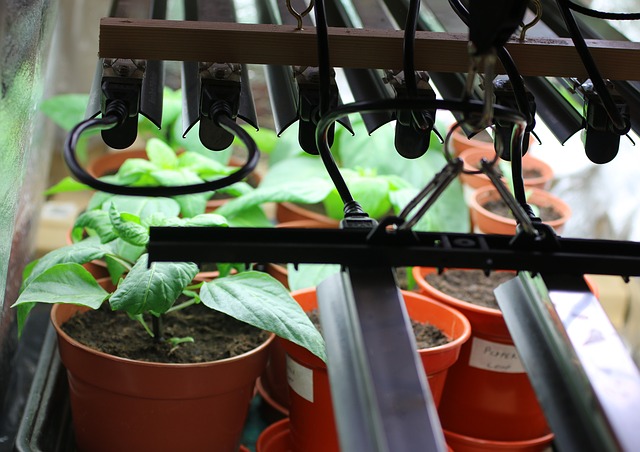

Tomato seeds can wait to be started in early to mid-March otherwise their height may quickly outgrow their space in the grow-light stand. Peppers, eggplants, tomatoes: Start seeds at end of February, eight to 10 weeks before planting outdoors in May.Can also be started inside in late June as a fall crop. Cabbage: Start seeds in early February, four to six weeks before planting in March, or when soil can be worked.Plant in garden when transplants are pencil size. Onion seeds/leeks: Start seeds in cell packs or a large flat in early February, eight to 10 weeks before planting in April.Check the back of your seed packets for other useful information, including planting depth of seeds, days to emerge, and garden spacing. Always plant extras in case some of the plants do not survive or show signs of weakness or deformity. Plan your garden area on graph paper to determine how many plants you will need to start. Here is a list of vegetables that can be started under lights and the approximate time before they will be ready for your garden planting.

Some of the germinating mixes also come with organic nutrients that serve as fertilizer for the first six to eight weeks. Check the bags for a list of ingredients. Neither of the mixes is soil, consisting instead of peat moss, perlite, vermiculite, coconut coir, limestone and other wetting agents and composts. After the seedlings outgrow their initial starter systems or pots, you will replant them into larger pots using a transplant mix. Your seeds should first be planted in seed starter or germinating mix. Your plants will need 16 hours of light and 8 hours of darkness after your seeds sprout. A power-strip timer is helpful for regulating the lights.The mats also help to disperse water gradually as the plants need more moisture. Capillary mats that draw up water like a sponge are useful inside of the trays, so that you can water the plants at their root systems. Large waterproof trays are best for supporting your growing seedlings.Continue to label the plants after they are transplanted, since it is easy to mix them up, especially if you have several varieties of the same vegetable. Craft sticks or labels are useful for marking the types of seeds in each pot along with the initial planting date.All the containers should first be sterilized with a one-part bleach/nine-parts water solution so that diseases and bacteria will not be transmitted to the new seedlings. You will also need 3-inch containers when the transplants grow larger. The important feature is that they have a hole in the bottom for drainage. You can also use recycled cell packs from last year’s annuals or small yogurt containers. Containers for your seedlings can be store-bought, 2-inch plastic pots or seed-starting kits with plastic, domed tops.Window light is not intense enough in late winter and spring and will result in spindly, weak plants. The bulbs need to be hung so that they can be adjusted up and down for plant growth. Grow-light fluorescent bulbs (T5 type) are best for the light source.A heat mat beneath the containers or a warm place in your home will shorten the time for seeds to sprout. Light is not necessary for initial germination.You could also make your own stand, as long as it has some basic components for success. Grow-light systems come in many styles, from tabletop to three-shelf stands. 3 shelf grow lightsTo start, a gardener might try one light fixture and a single shelf or table.


 0 kommentar(er)
0 kommentar(er)
